
Crossfire is a 1947 American film noir drama film starring Robert Young, Robert Mitchum and Robert Ryan which deals with the theme of antisemitism, as did that year's Academy Award for Best Picture winner, Gentleman's Agreement. The film was directed by Edward Dmytryk and the screenplay was written by John Paxton, based on the 1945 novel The Brick Foxhole by screenwriter and director Richard Brooks. The film's supporting cast features Gloria Grahame and Sam Levene. The picture received five Oscar nominations, including Ryan for Best Supporting Actor and Gloria Grahame for Best Supporting Actress. It was the first B movie to receive a Best Picture nomination.
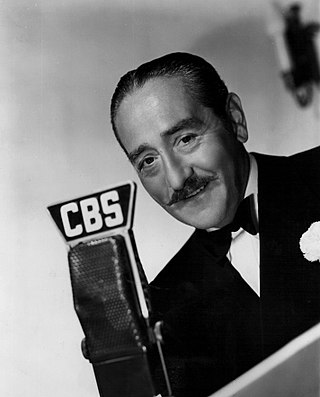
Adolphe Jean Menjou was an American actor. His career spanned both silent films and talkies. He appeared in such films as Charlie Chaplin's A Woman of Paris, where he played the lead role; Stanley Kubrick's Paths of Glory with Kirk Douglas; Ernst Lubitsch's The Marriage Circle; The Sheik with Rudolph Valentino; Morocco with Marlene Dietrich and Gary Cooper; and A Star Is Born with Janet Gaynor and Fredric March, and was nominated for an Academy Award for The Front Page in 1931.

Detective Story is a 1951 American crime drama directed by William Wyler and starring Kirk Douglas that tells the story of one day in the lives of the various people who populate a police detective squad. The ensemble supporting cast features Eleanor Parker, William Bendix, Cathy O'Donnell, and George Macready. Both Lee Grant and Joseph Wiseman play large roles in their film debuts. The film was adapted by Robert Wyler and Philip Yordan from the 1949 play by Sidney Kingsley. It was nominated for four Academy Awards, including Academy Award for Best Director for Wyler, Best Actress for Parker, and Best Supporting Actress for Grant.

Edward Dmytryk was a Canadian-born American film director and editor. He was known for his 1940s noir films and received an Oscar nomination for Best Director for Crossfire (1947). In 1947, he was named as one of the Hollywood Ten, a group of blacklisted film industry professionals who refused to testify to the House Un-American Activities Committee (HUAC) in their investigations during the Red Scare of the McCarthy era. They all served time in prison for contempt of Congress. In 1951, Dmytryk testified to the HUAC and named individuals, including Arnold Manoff, whose careers were then destroyed for many years, to rehabilitate his own career. First hired again by independent producer Stanley Kramer in 1952, Dmytryk is likely best known for directing The Caine Mutiny (1954), a critical and commercial success. The second-highest-grossing film of the year, it was nominated for Best Picture and several other awards at the 1955 Oscars. Dmytryk was nominated for a Directors Guild Award for Outstanding Directorial Achievement in Motion Pictures.
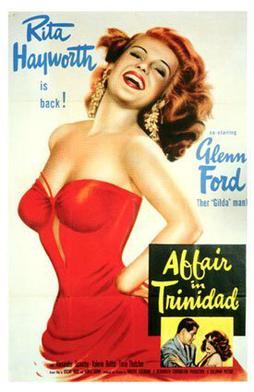
Affair in Trinidad is a 1952 American film noir directed by Vincent Sherman and starring Rita Hayworth and Glenn Ford. It was produced by Hayworth's Beckworth Corporation and released by Columbia Pictures.
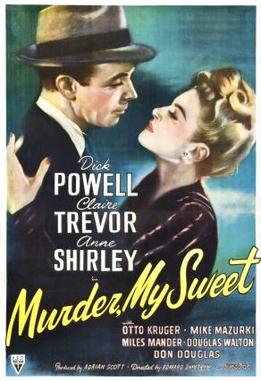
Murder, My Sweet is a 1944 American film noir, directed by Edward Dmytryk and starring Dick Powell, Claire Trevor and Anne Shirley. The film is based on Raymond Chandler's 1940 novel Farewell, My Lovely. It was the first film to feature Chandler's primary character, the hard-boiled private detective Philip Marlowe.

Marie Windsor was an American actress known for her femme fatale characters in the classic film noir features Force of Evil, The Narrow Margin and The Killing. Windsor's height created problems for her in scenes with all but the tallest actors. She was the female lead in so many B movies that she became dubbed the "Queen" of the genre.

Cornered is a 1945 American mystery thriller film noir starring Dick Powell and directed by Edward Dmytryk. This is the second teaming of Powell and Dmytryk. The screenplay was written by John Paxton with uncredited help from Ben Hecht.
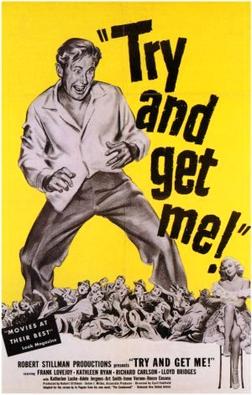
The Sound of Fury is a 1950 American crime film noir directed by Cy Endfield and starring Frank Lovejoy, Kathleen Ryan, Richard Carlson. The film is based on the 1947 novel The Condemned by Jo Pagano, who also wrote the screenplay.
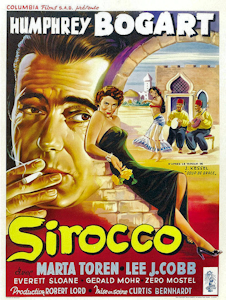
Sirocco is a 1951 American thriller film noir directed by Curtis Bernhardt and starring Humphrey Bogart, Märta Torén and Lee J. Cobb. It was distributed by Hollywood studio Columbia Pictures and was based on the novel by the French author Joseph Kessel. The film name is derived from Sirocco, a strong wind blowing in the Mediterranean, coming from the Sahara desert. It is hot and dry and is said to make people irritable. The film is set in Syria somewhat east of the wind's paths.

State of the Union is a 1948 American drama film directed by Frank Capra about a man's desire to run for the nomination as the Republican candidate for President, and the machinations of those around him. The New York Times described it as "a slick piece of screen satire...sharper in its knife-edged slicing at the hides of pachyderm schemers and connivers than was the original." The film was written by Myles Connolly and Anthony Veiller and was based on the 1945 Russel Crouse, Howard Lindsay Pulitzer Prize-winning play of the same name.

The Devil Thumbs a Ride is a 1947 American film noir directed by Felix E. Feist and featuring Lawrence Tierney, Ted North, Nan Leslie and Betty Lawford. It was produced and distributed by RKO Pictures.

I Walk Alone is a 1947 film noir released by Paramount Pictures starring Burt Lancaster and Lizabeth Scott, with a supporting cast featuring Wendell Corey, Kirk Douglas, and Kristine Miller. The film was produced by Hal B. Wallis, and directed by Byron Haskin.
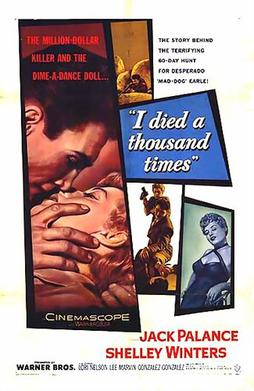
I Died a Thousand Times is a 1955 American CinemaScope Warnercolor film noir directed by Stuart Heisler. The drama features Jack Palance as paroled bank robber Roy Earle, with Shelley Winters, Lee Marvin, Earl Holliman, Perry Lopez, Pedro Gonzalez Gonzalez, and Lon Chaney Jr.

Hitler's Children is a 1943 American black-and-white war film made by RKO Radio Pictures. The film stars Tim Holt, Bonita Granville and Kent Smith and was directed by Edward Dmytryk from an adaptation by Emmet Lavery of Gregor Ziemer's book Education for Death, which had previously been adapted as a Disney animated short film.

Hell on Frisco Bay is a 1956 American CinemaScope film noir crime film directed by Frank Tuttle and starring Alan Ladd, Edward G. Robinson and Joanne Dru. It was made for Ladd's own production company, Jaguar.
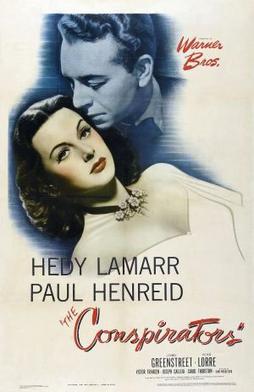
The Conspirators is a 1944 American film noir, World War II, drama, spy, and thriller film directed by Jean Negulesco. It stars Hedy Lamarr and Paul Henreid, features Sydney Greenstreet and Peter Lorre in supporting roles, and has a cameo of Aurora Miranda singing a Fado. The Conspirators reunites several performers who appeared in Casablanca (1942).

Eight Iron Men is a 1952 American World War II drama film directed by Edward Dmytryk and produced by Stanley Kramer. It stars Bonar Colleano, Arthur Franz, Lee Marvin, Richard Kiley and Mary Castle. Lee Marvin's powerful performance as the squad's leader ratchets up the suspense along with Dmytryk's noir style direction and J. Roy Hunt's deft cinematography.

Black Hand is a 1950 American film noir directed by Richard Thorpe and starring Gene Kelly as an Italian immigrant fighting against the Black Hand extortion racket in New York City in the first decade of the 20th century.

Undercover Girl is a 1950 American crime film noir directed by Joseph Pevney and starring Alexis Smith and Scott Brady.




















